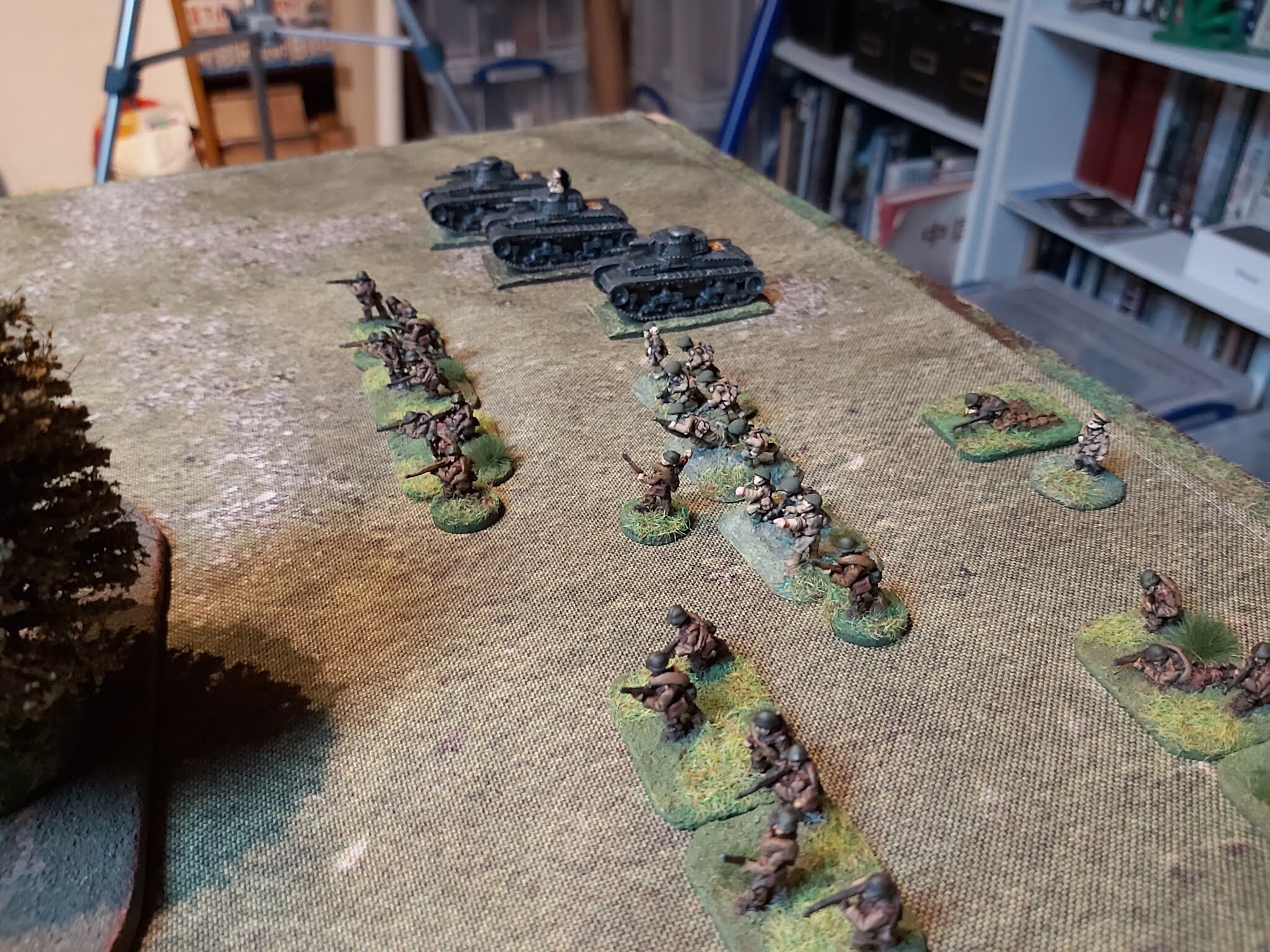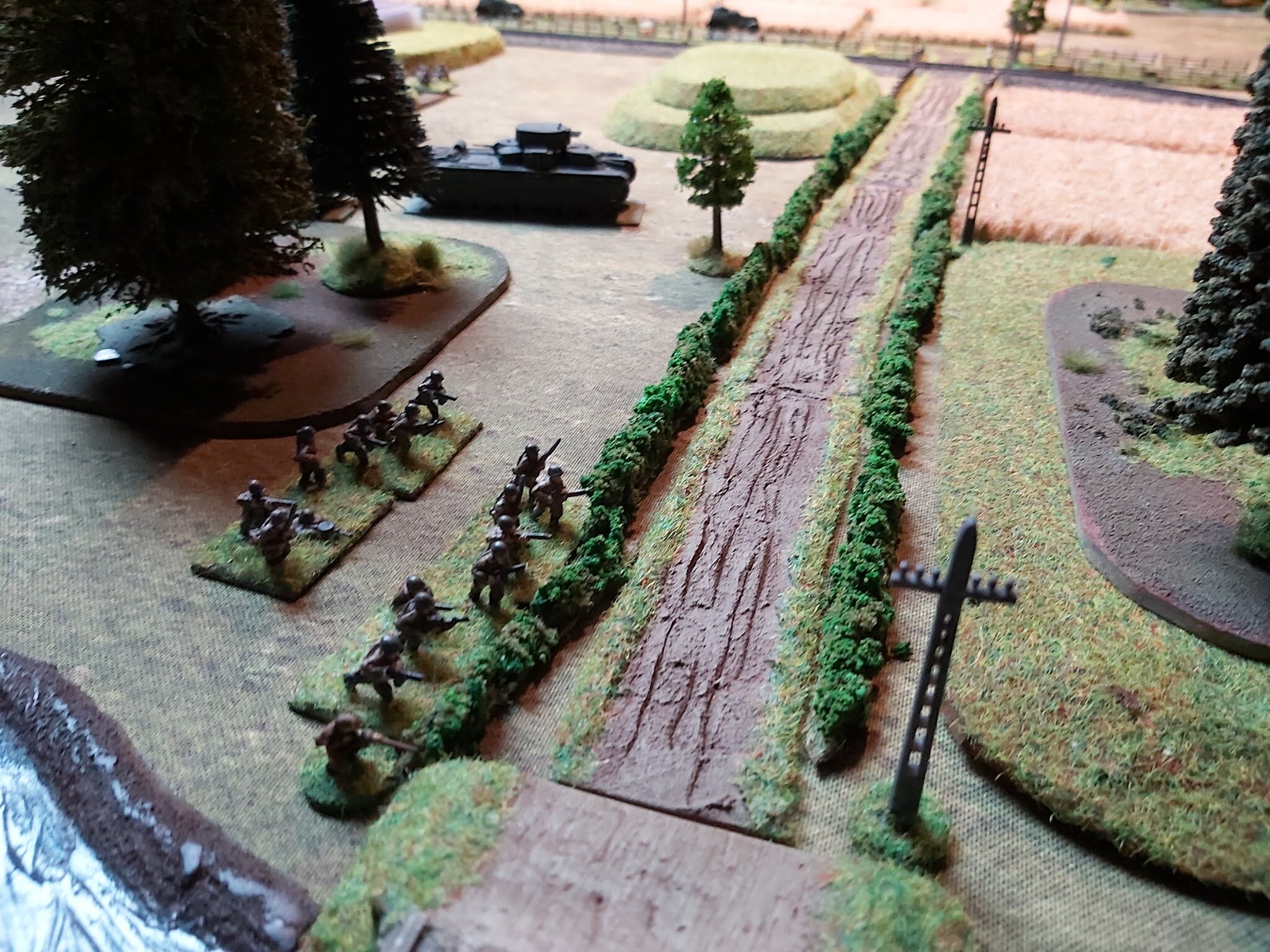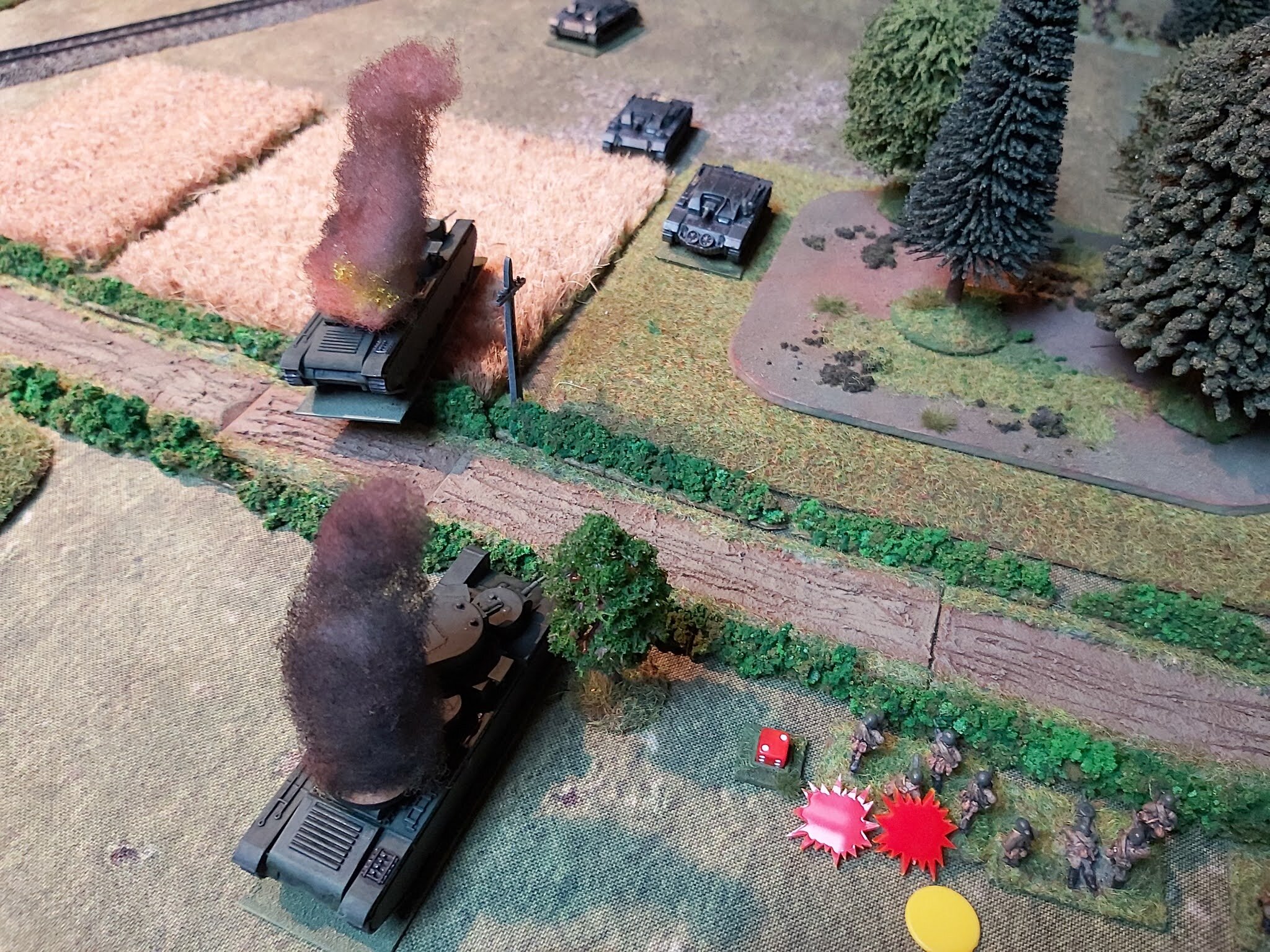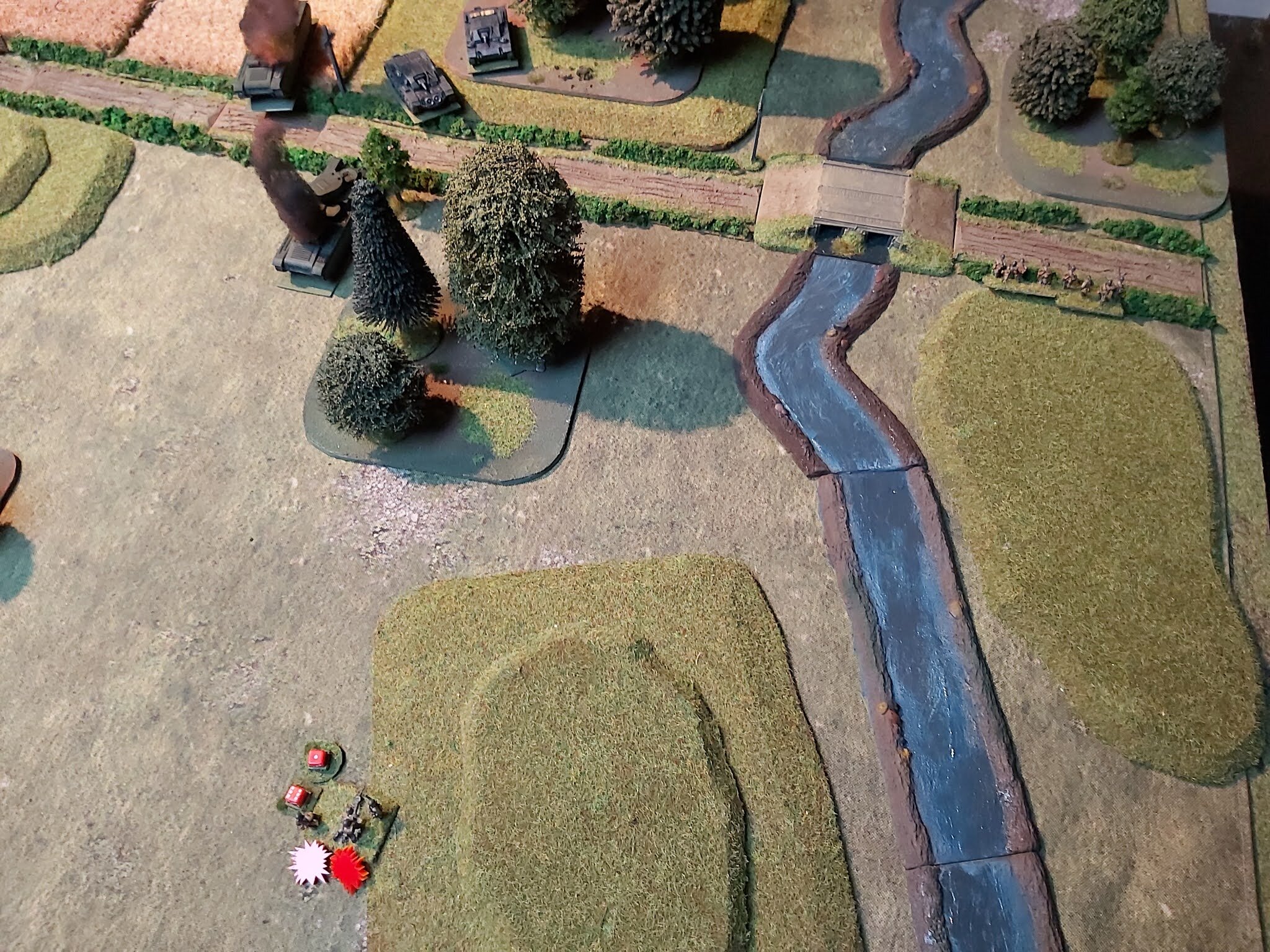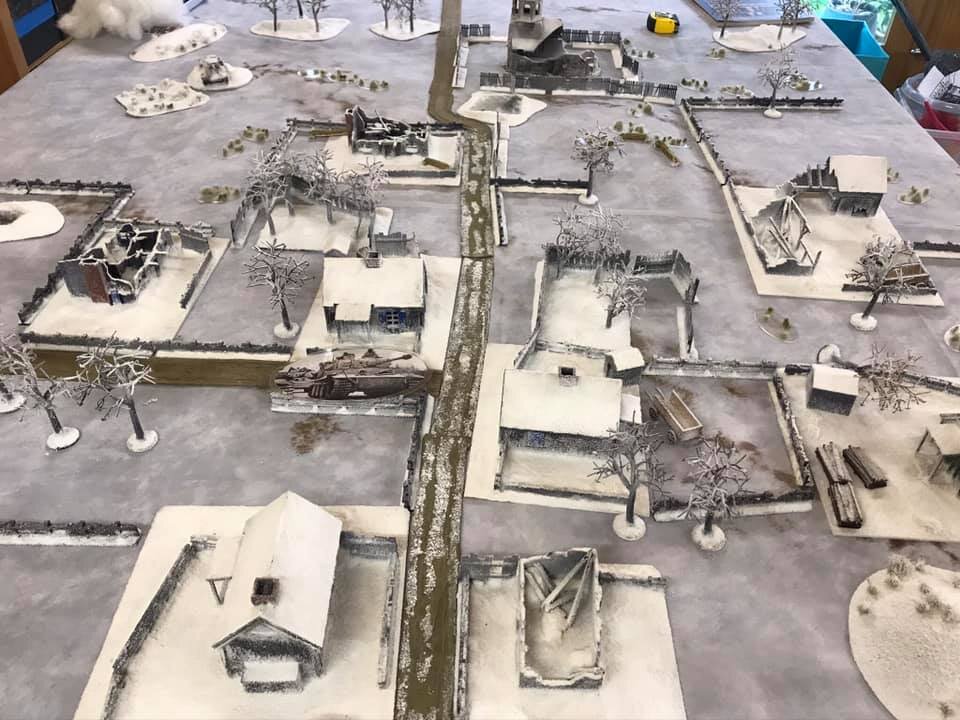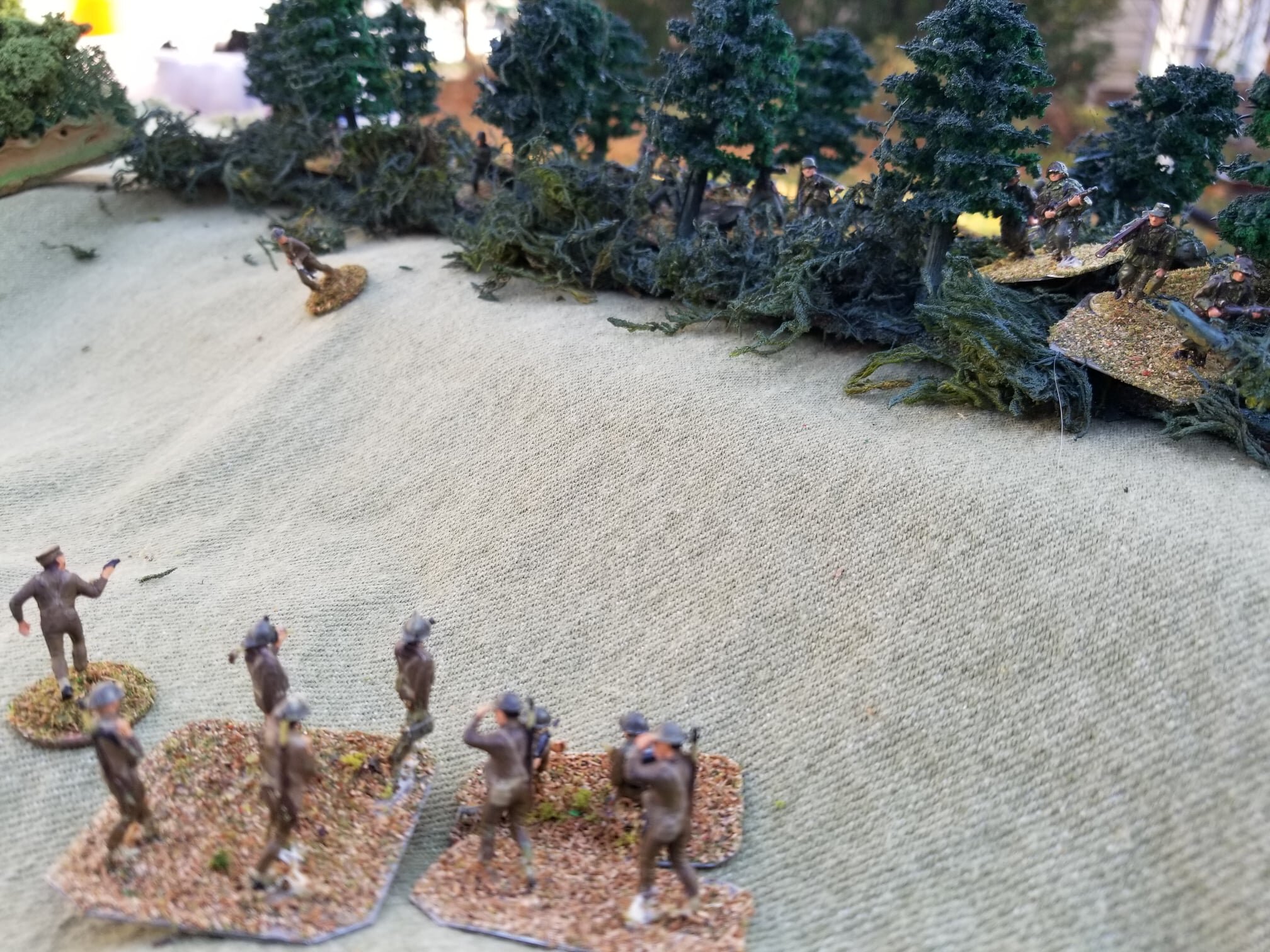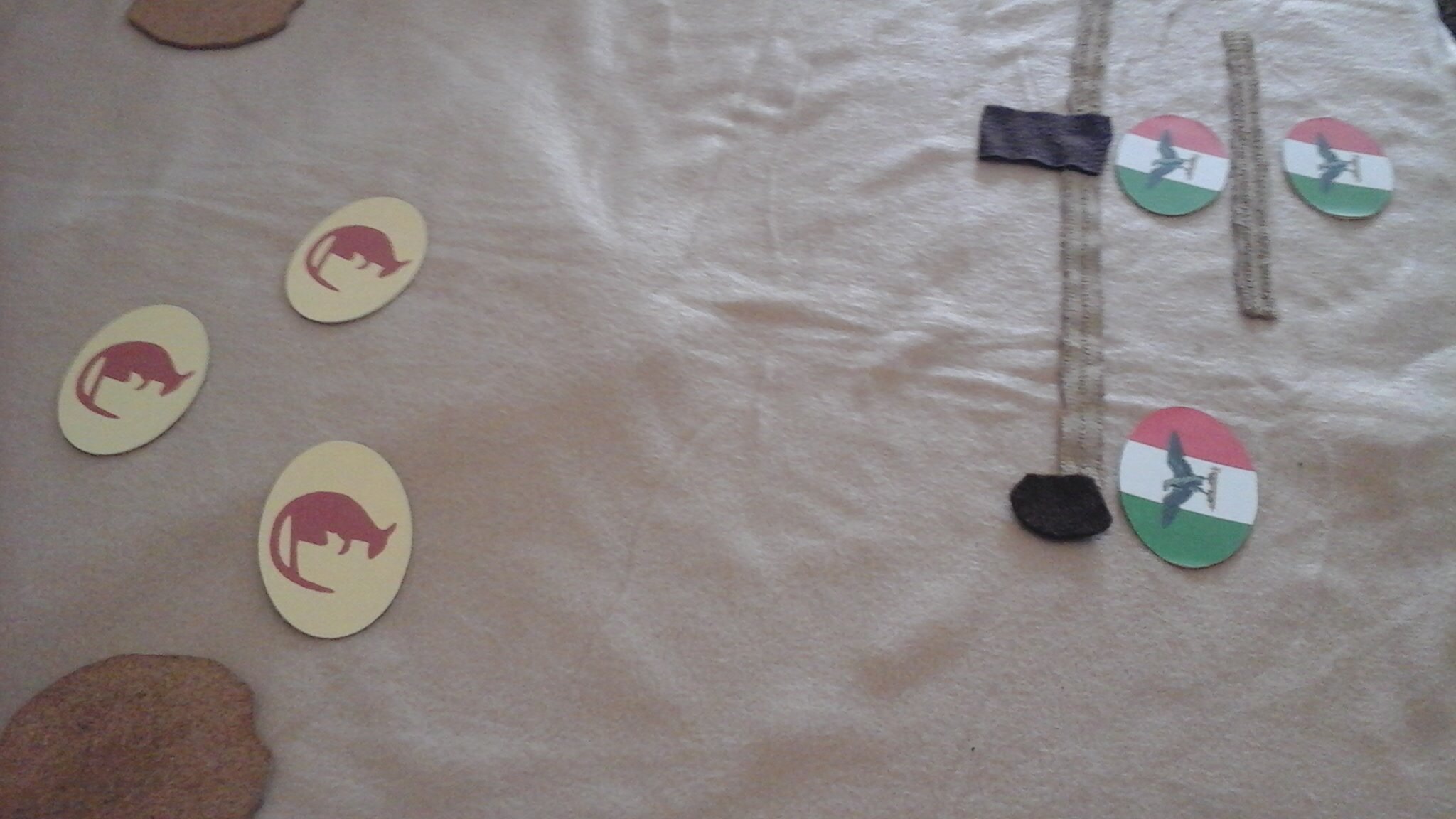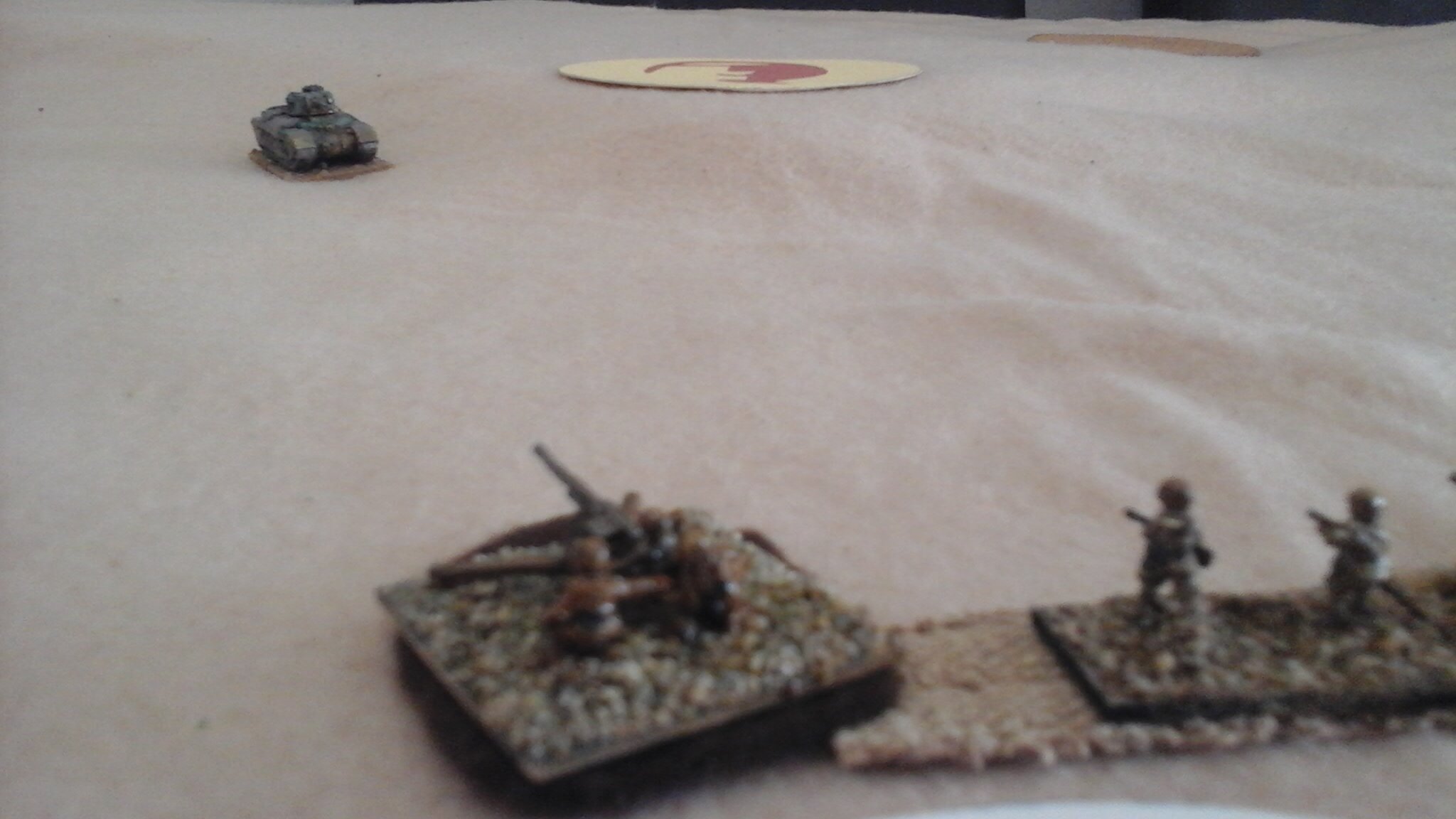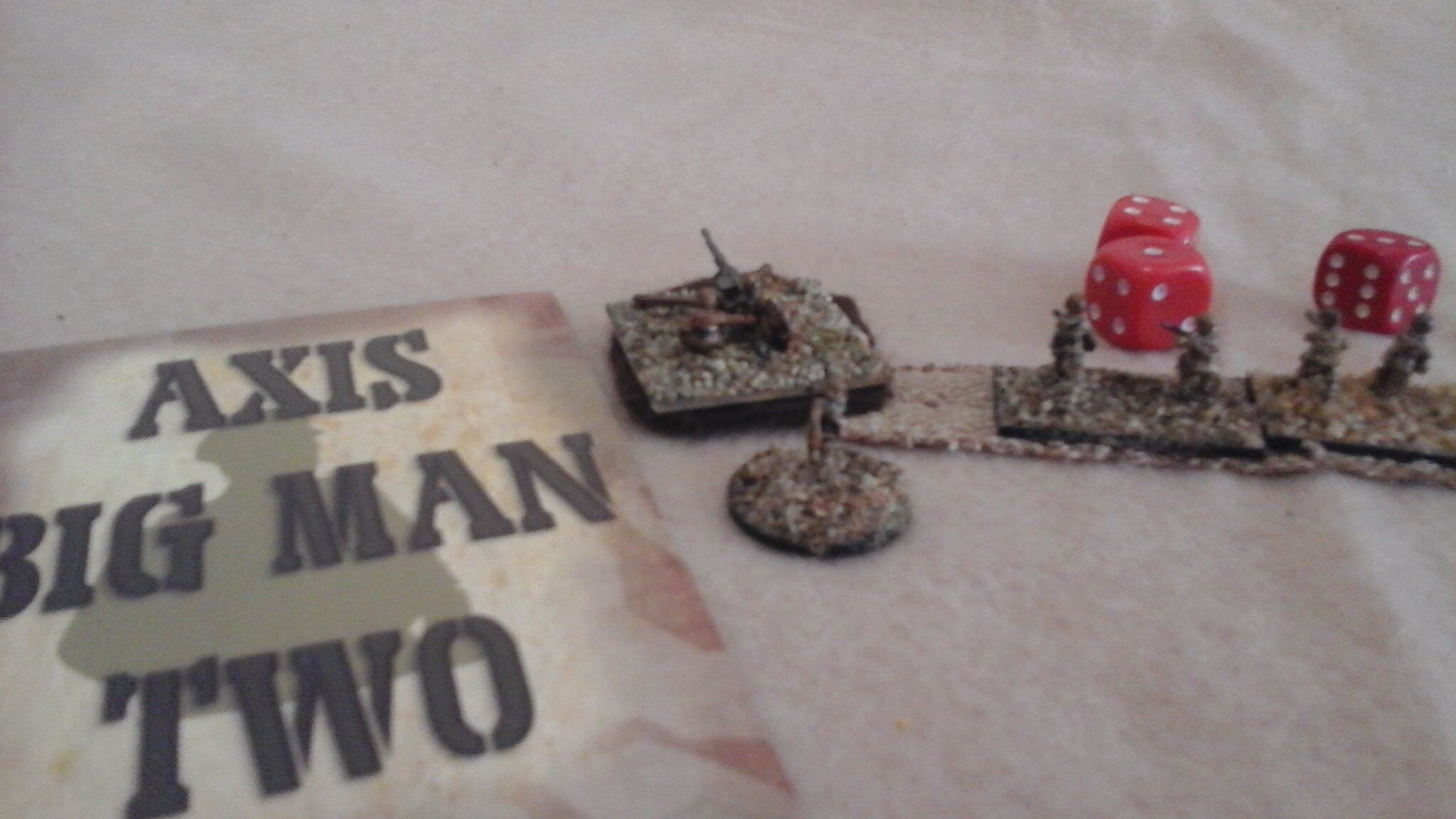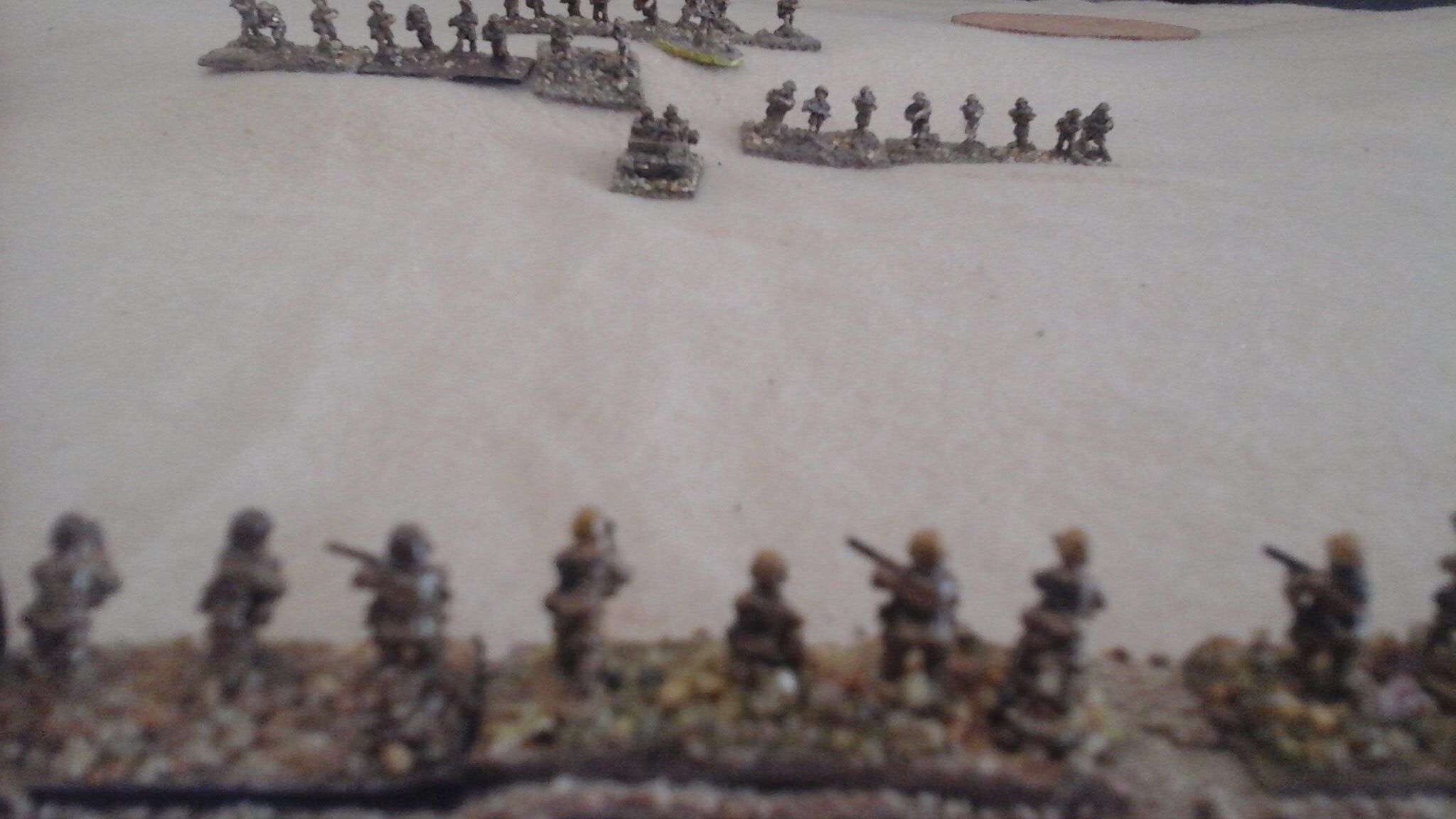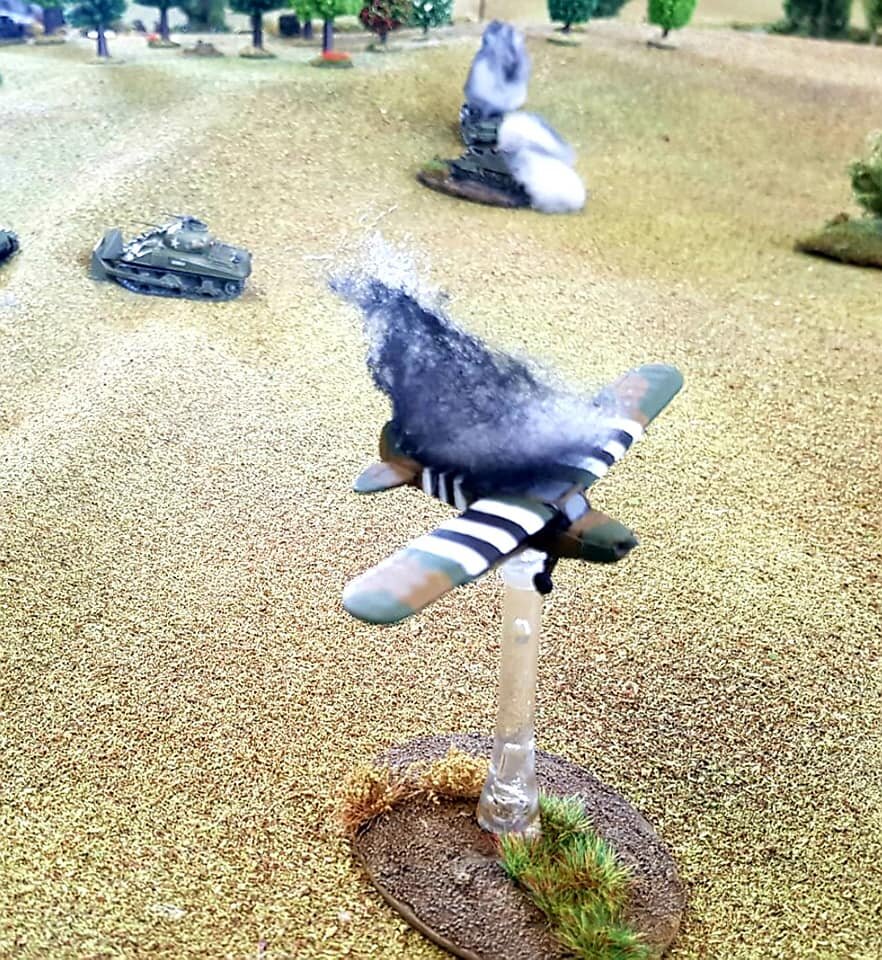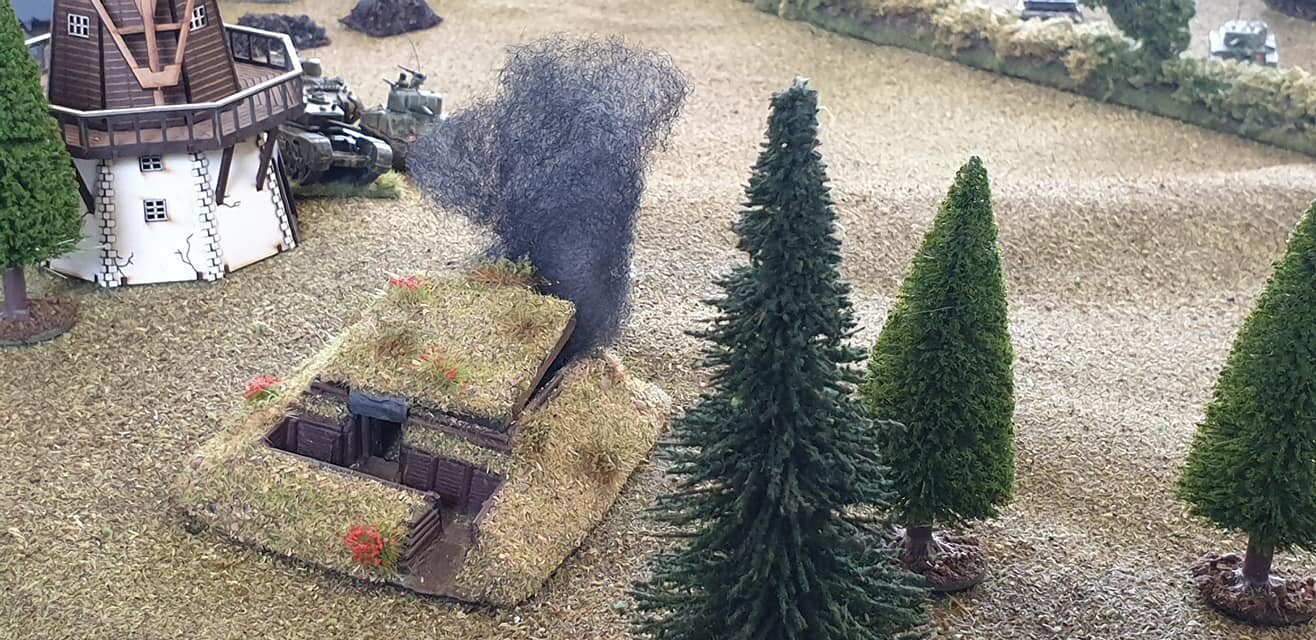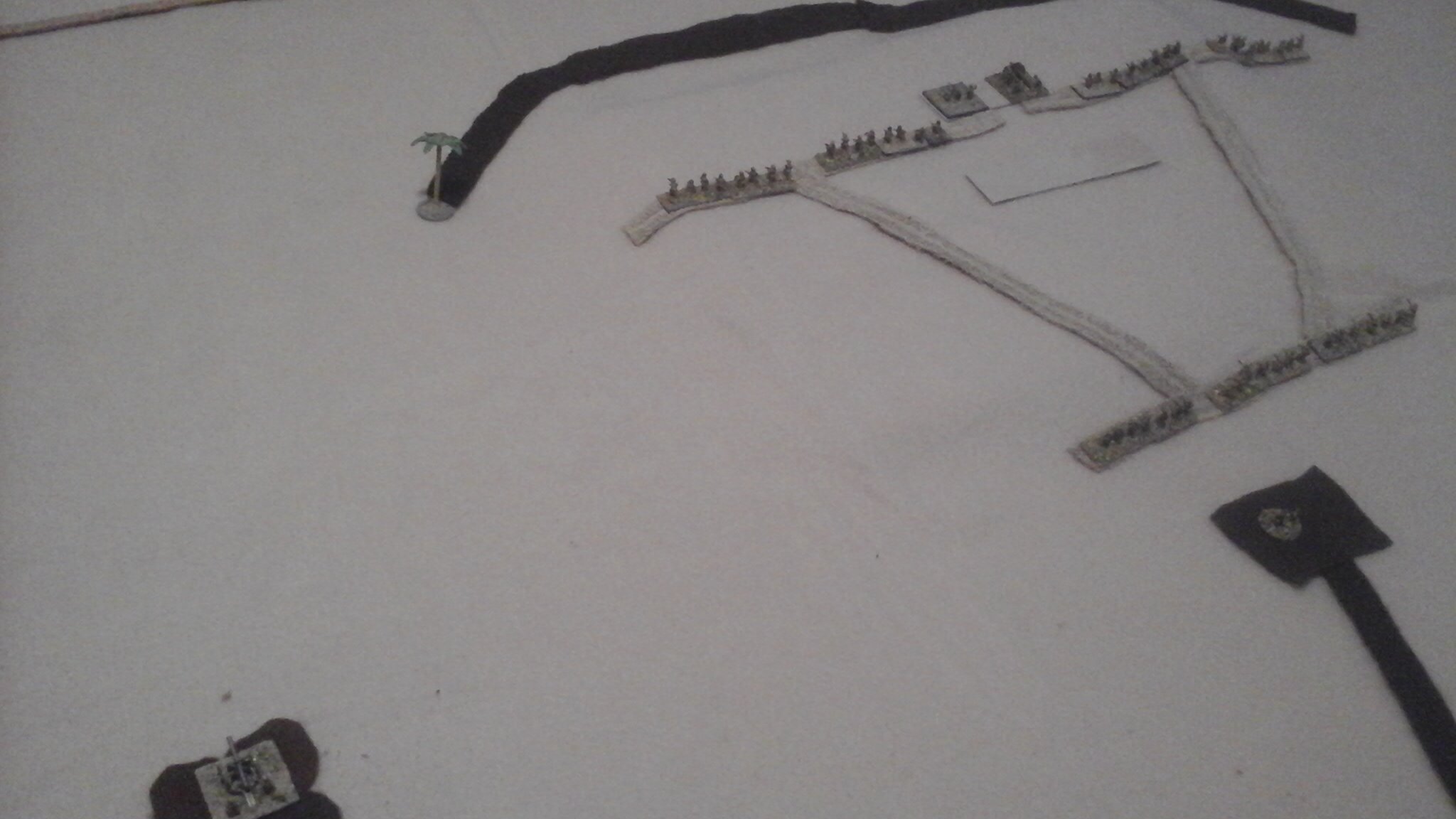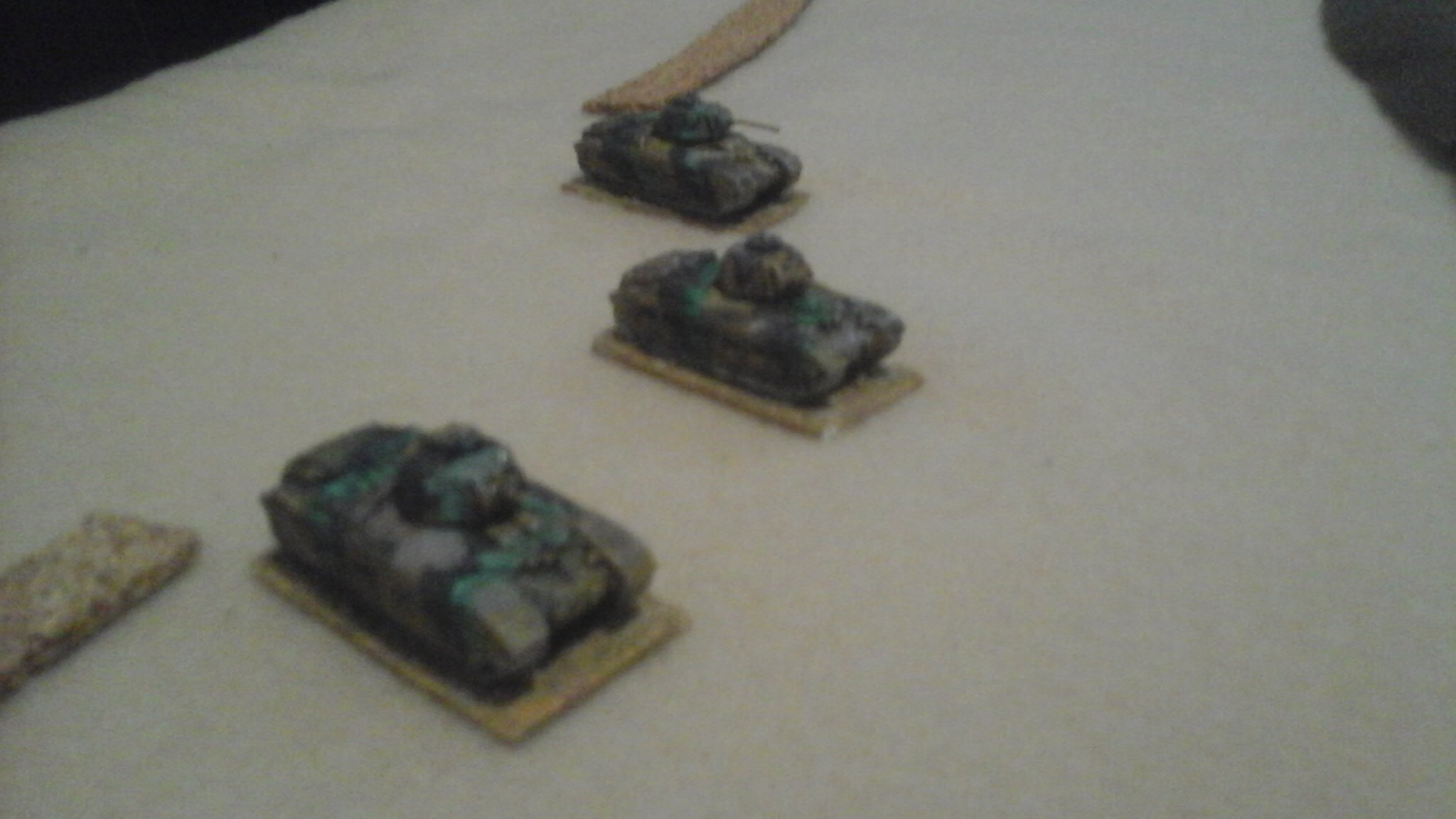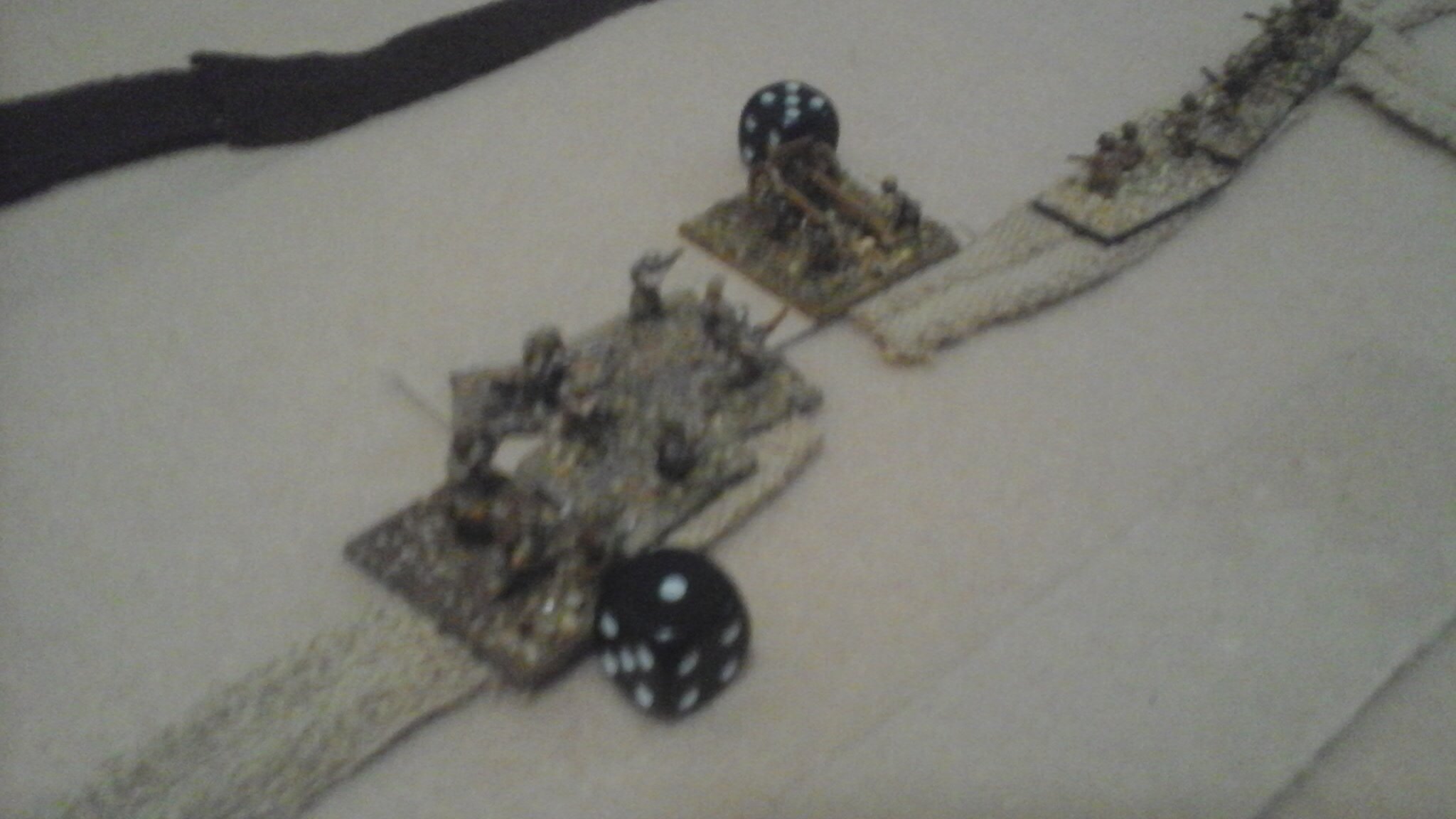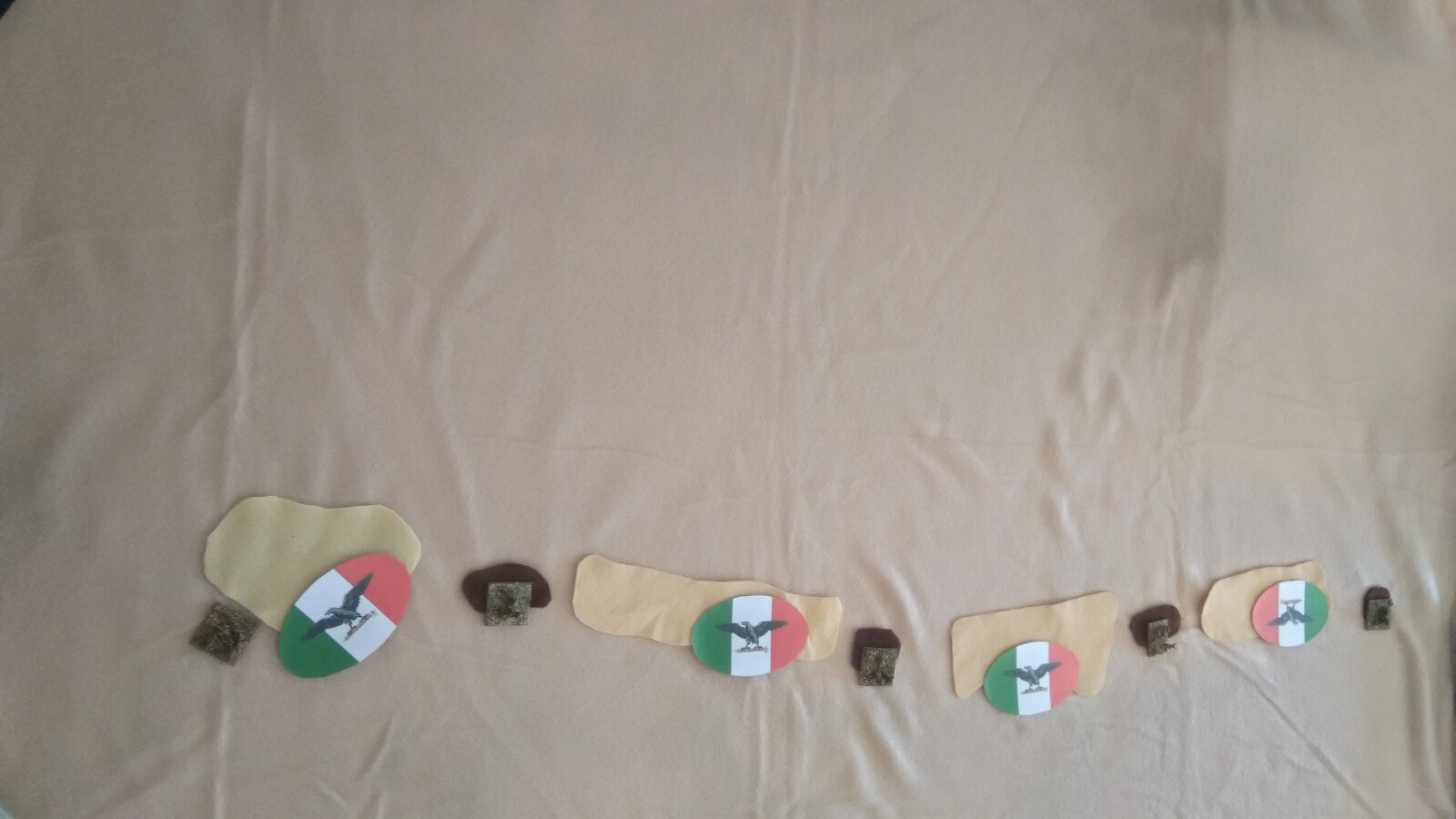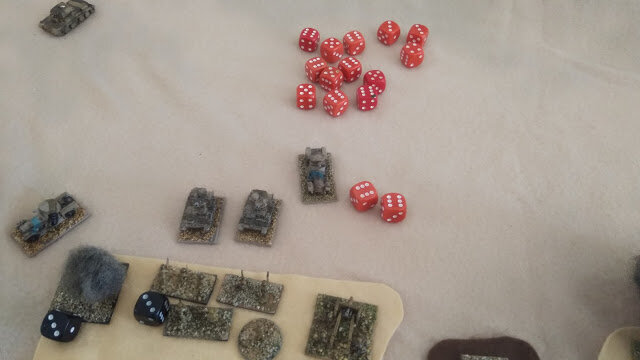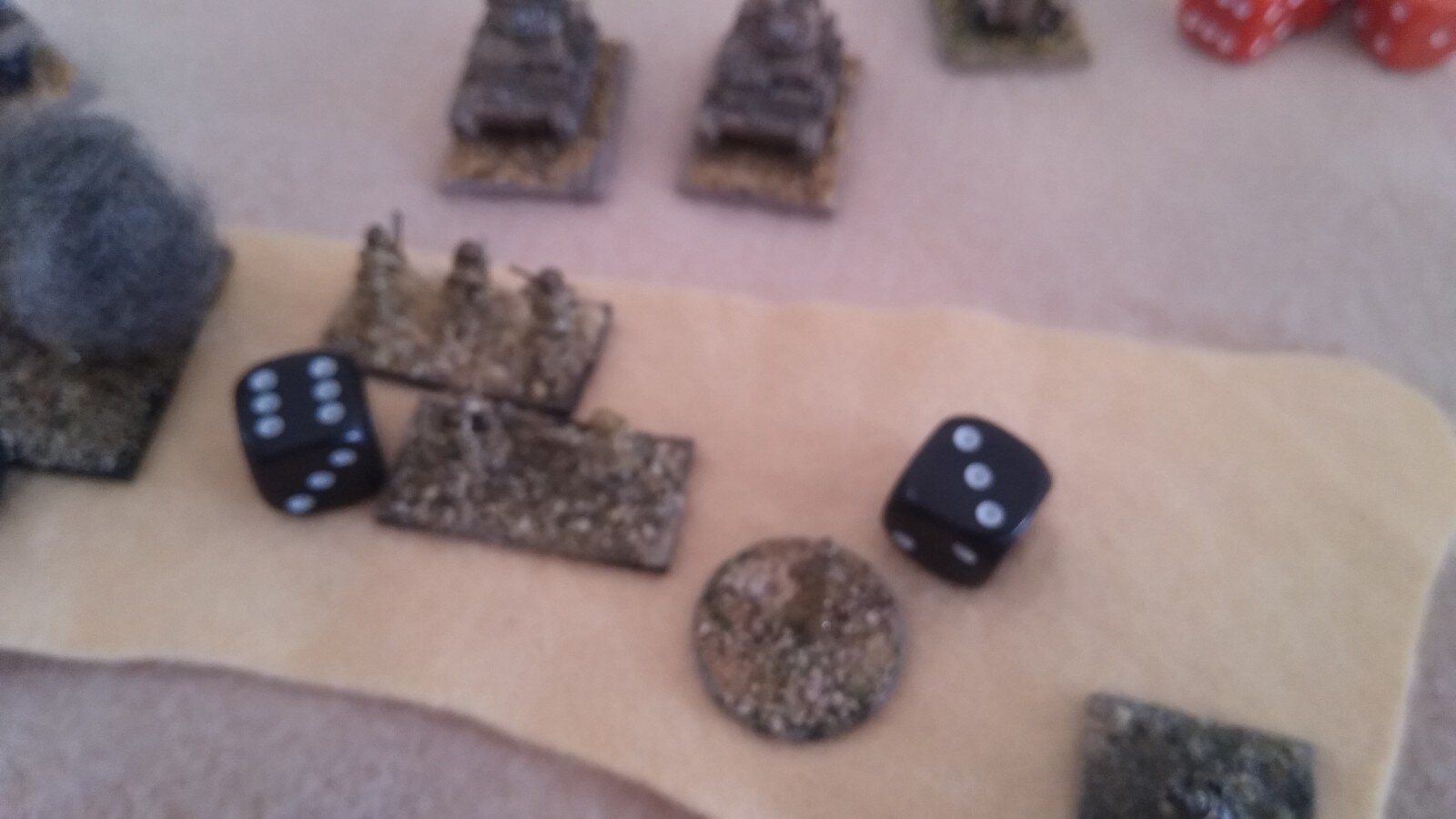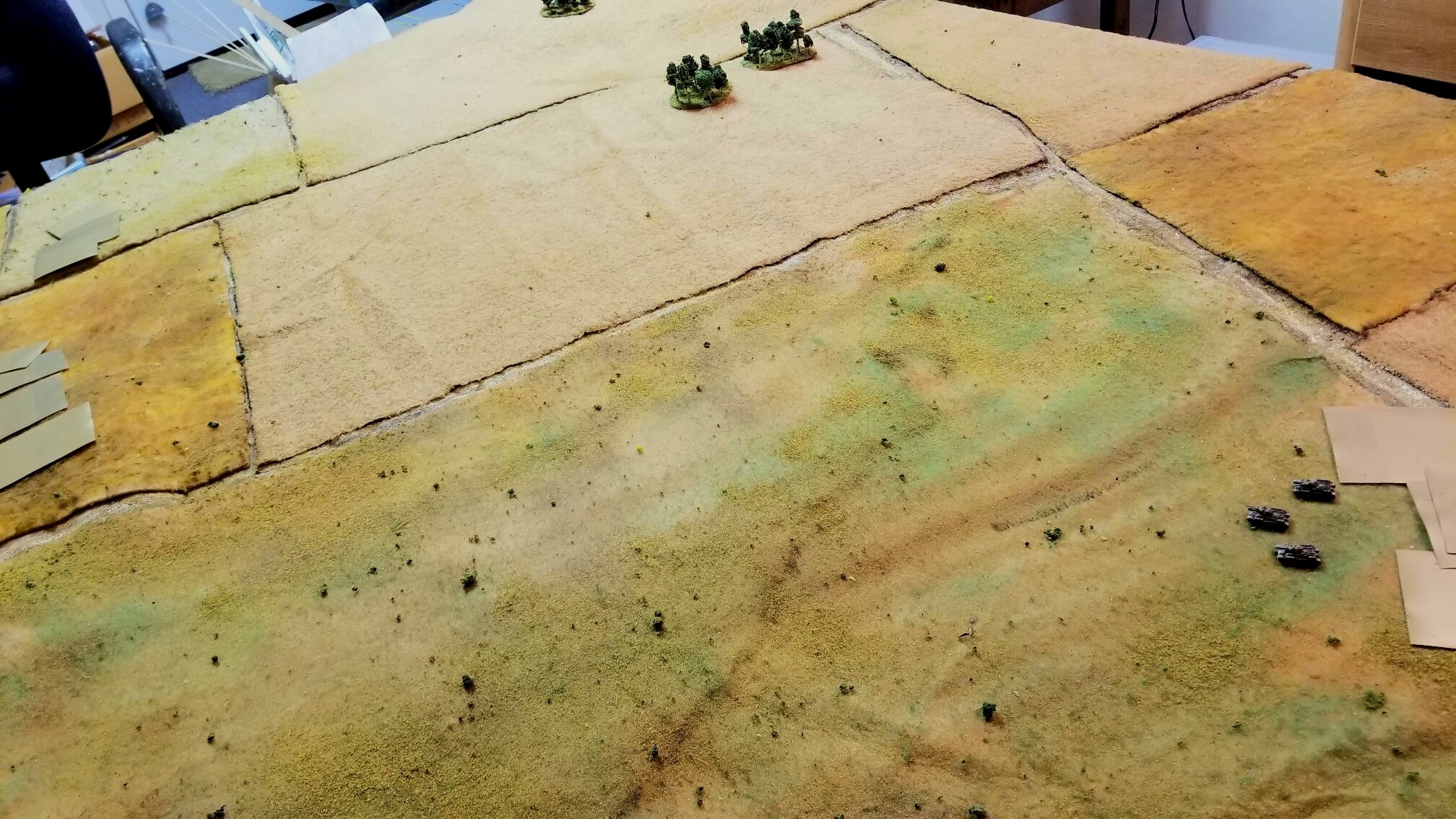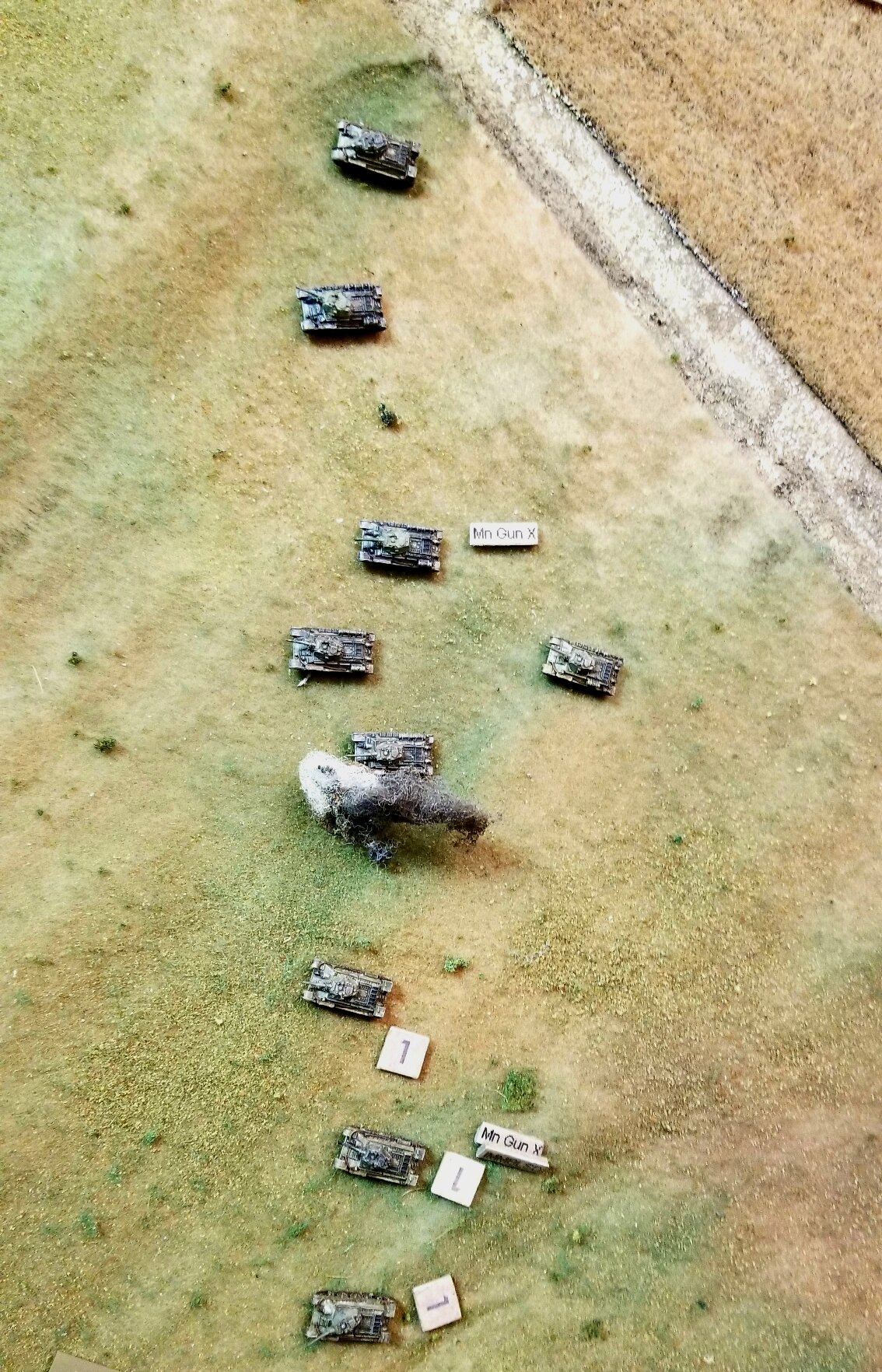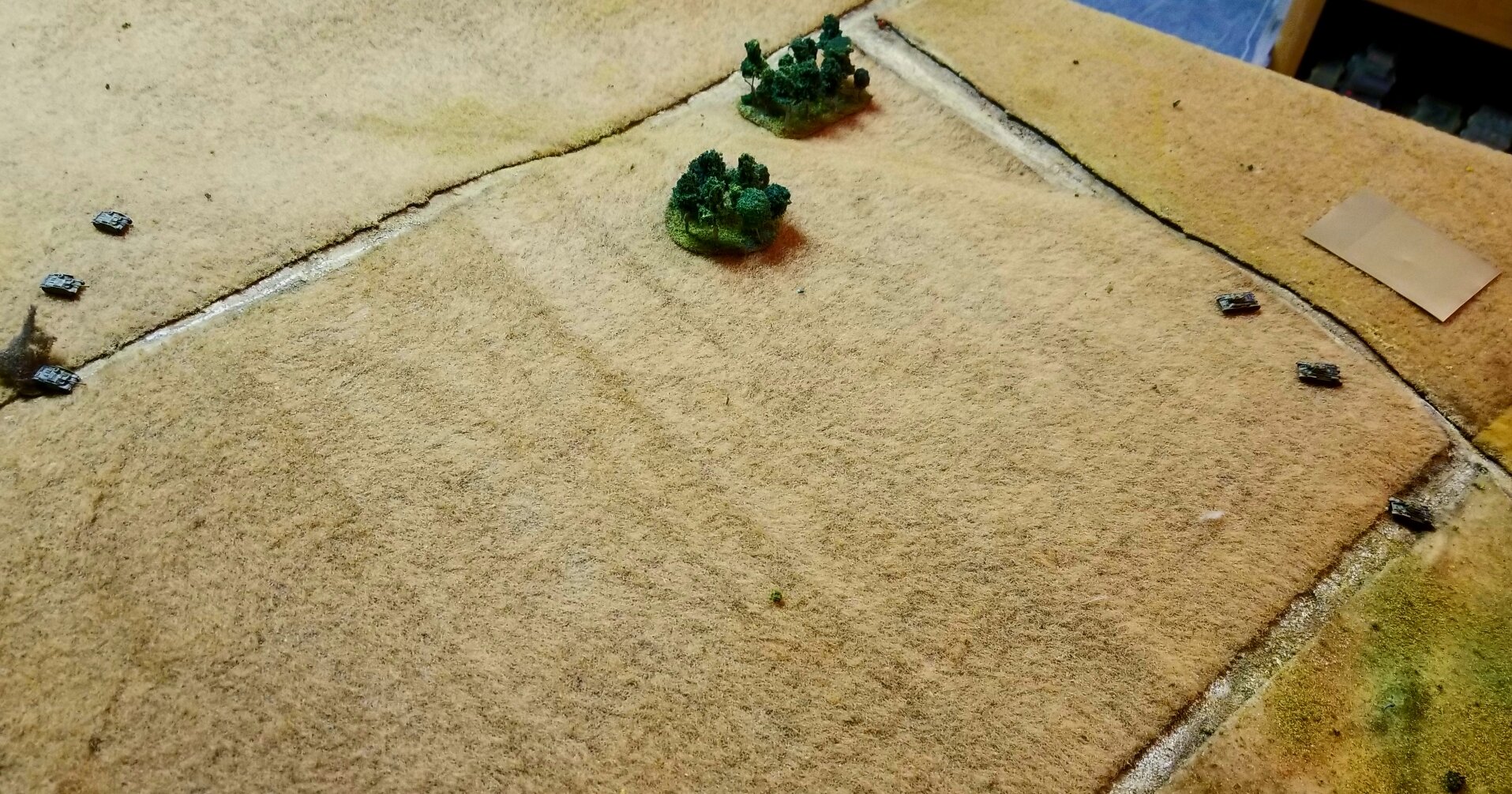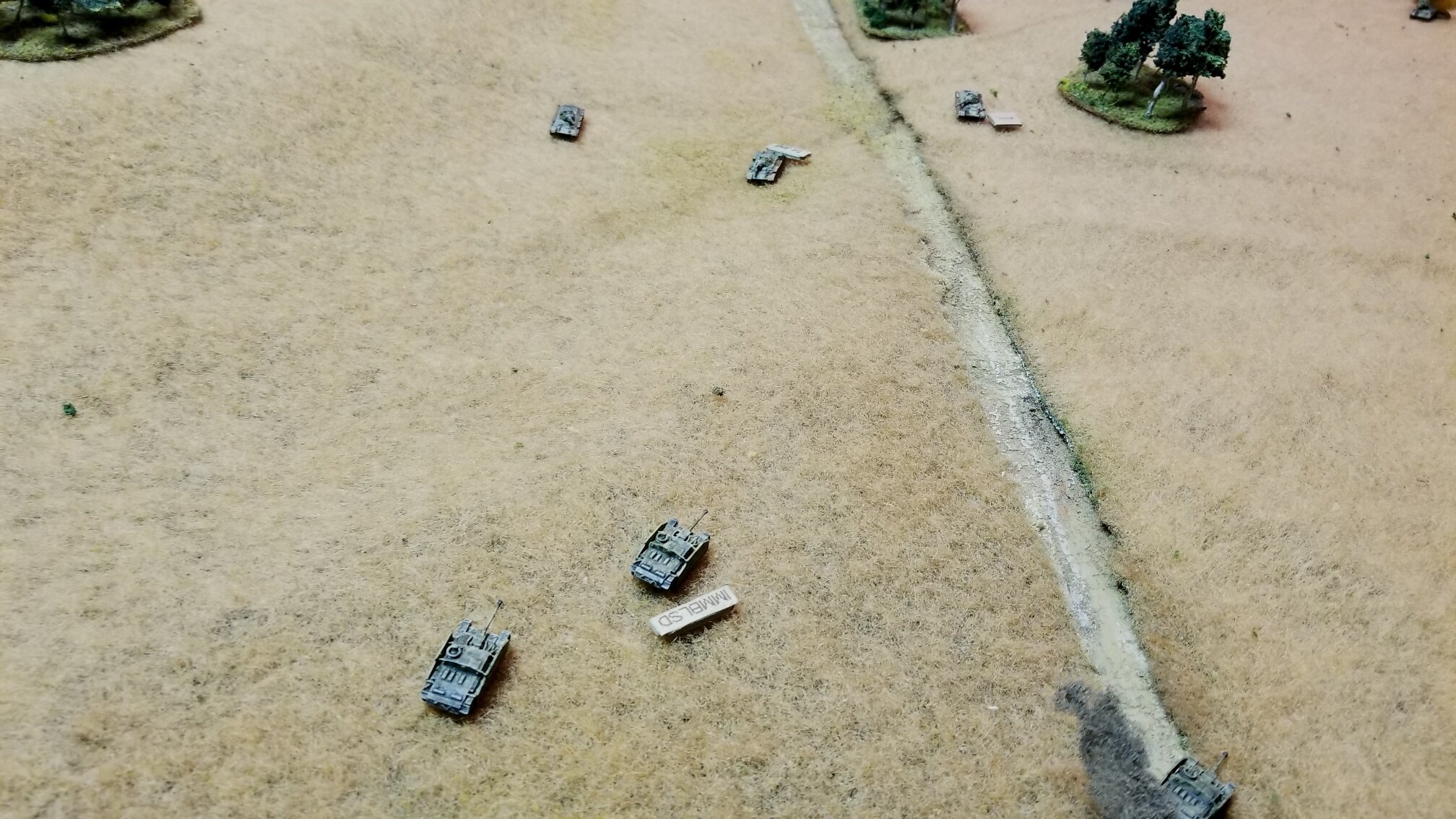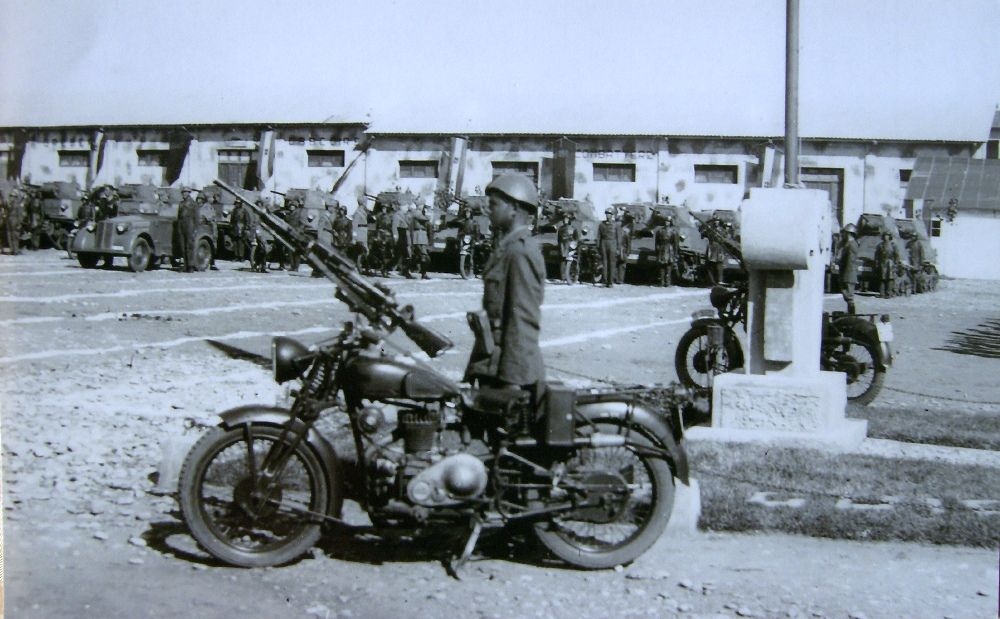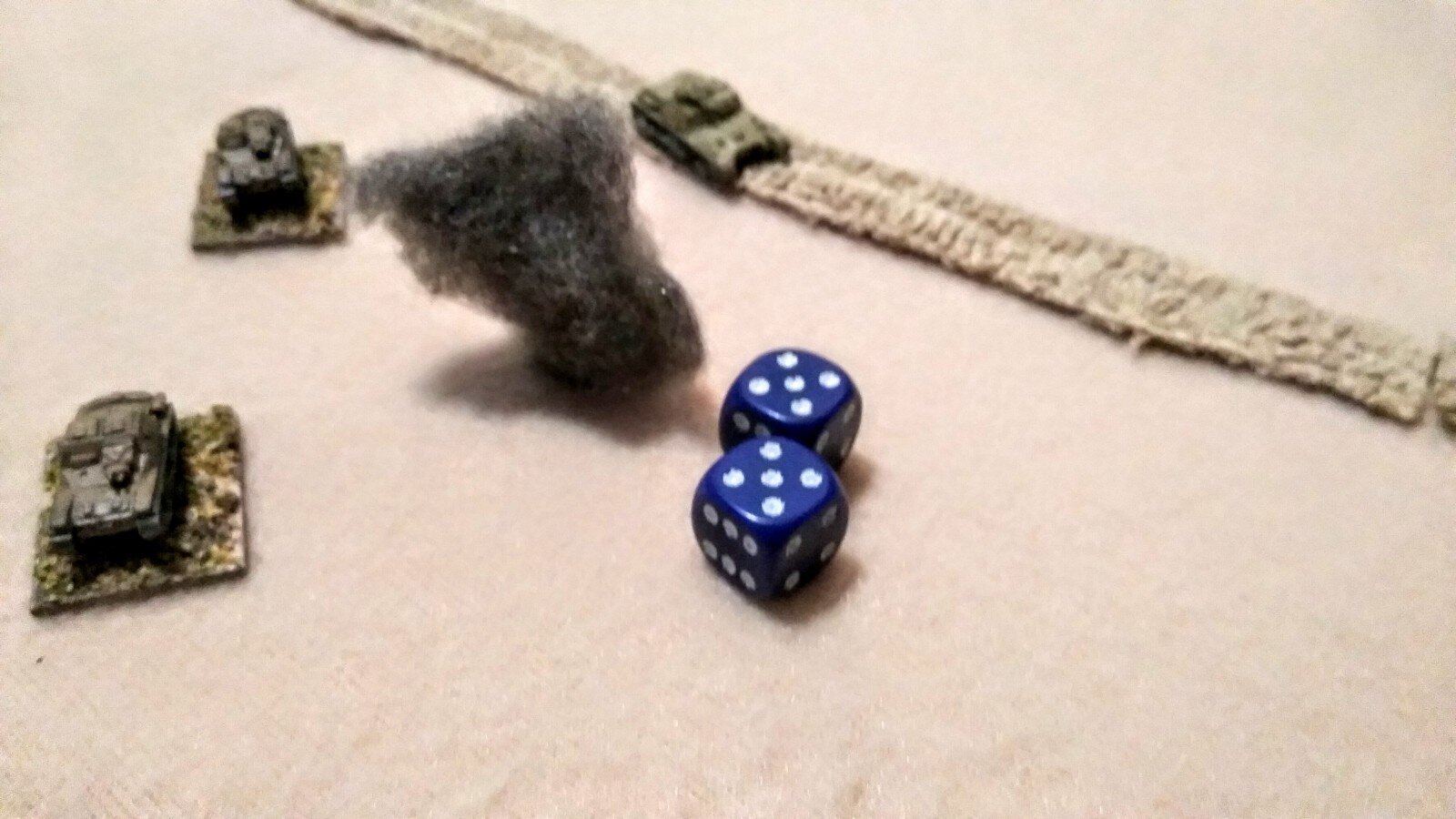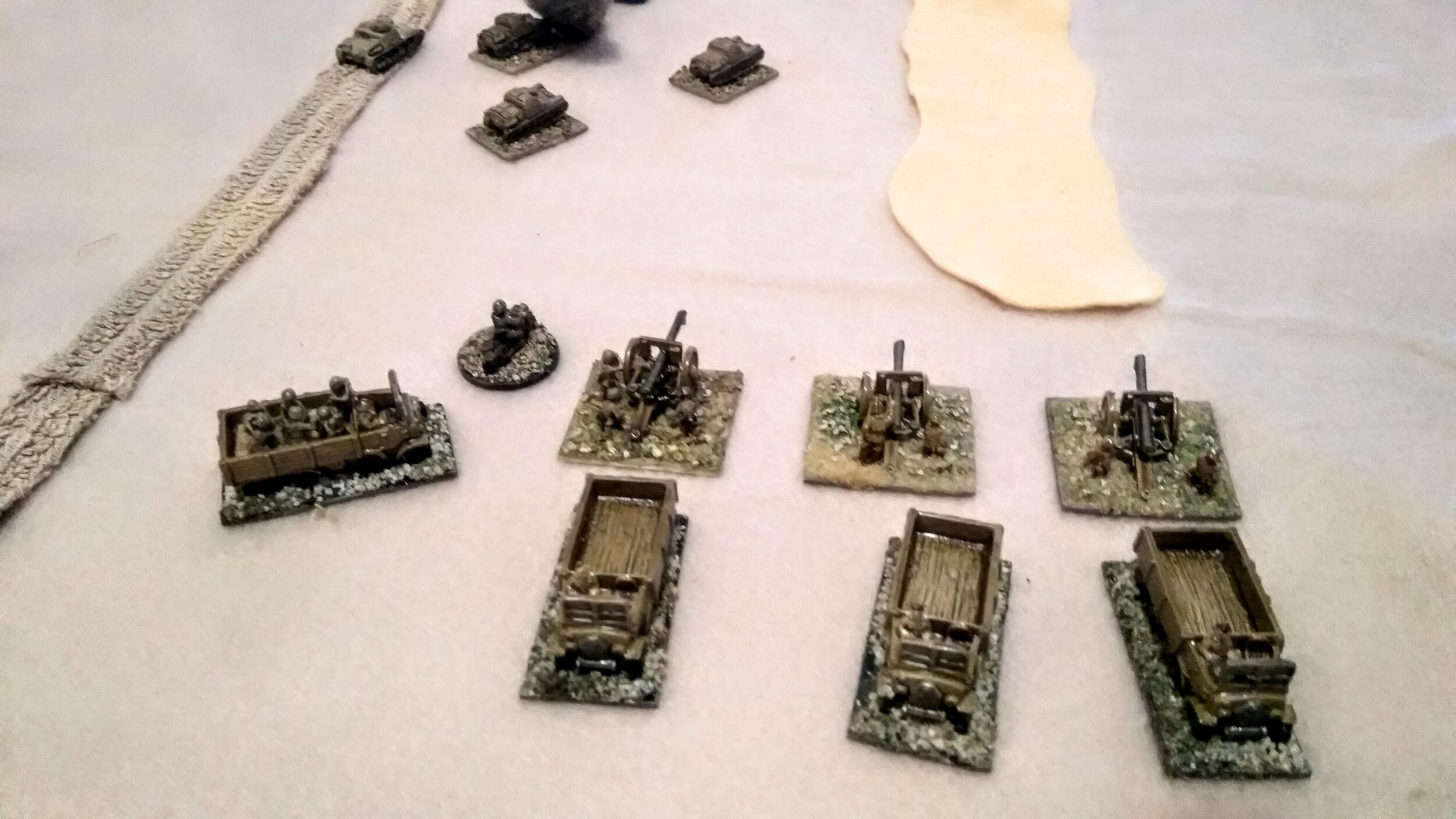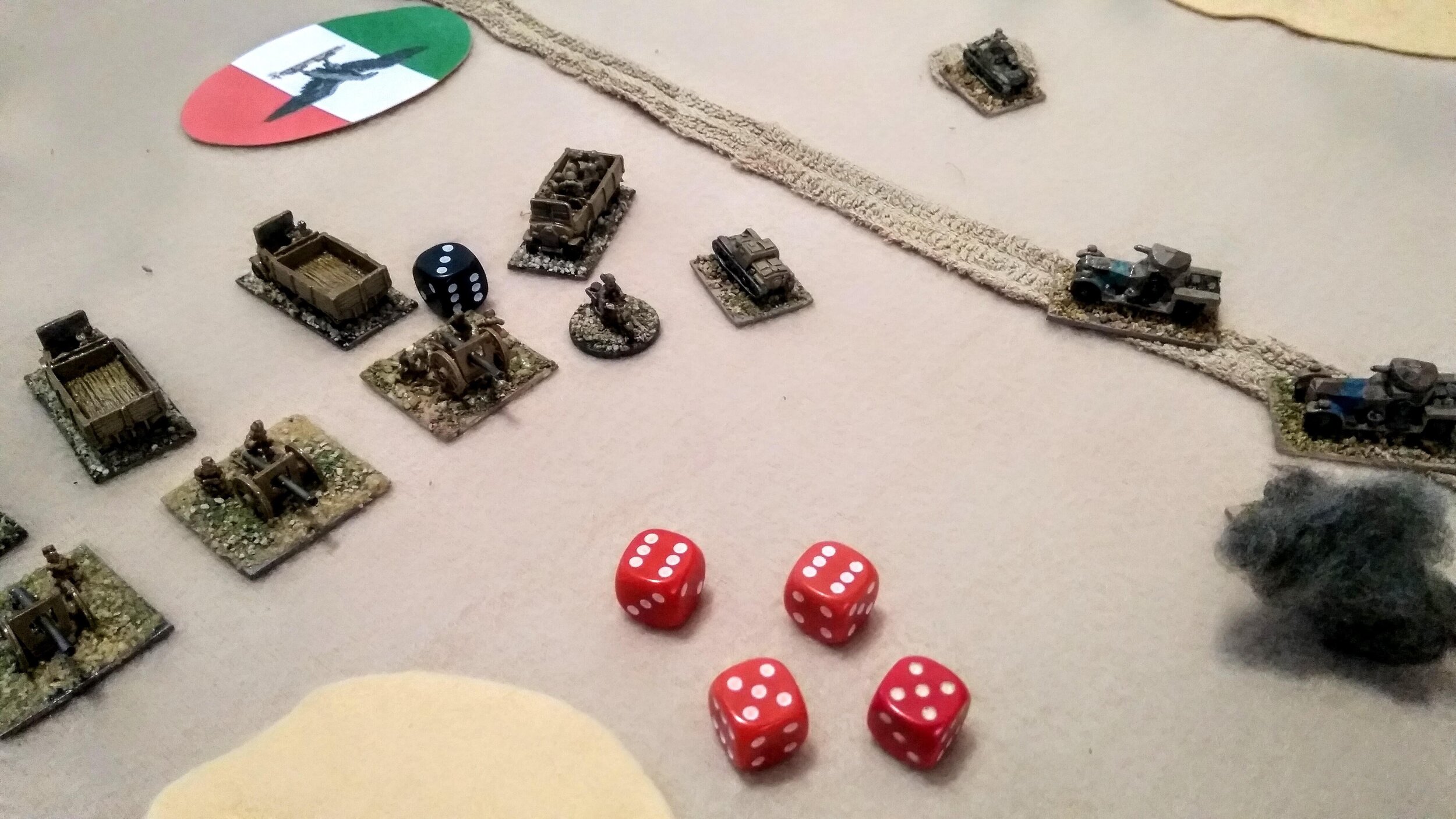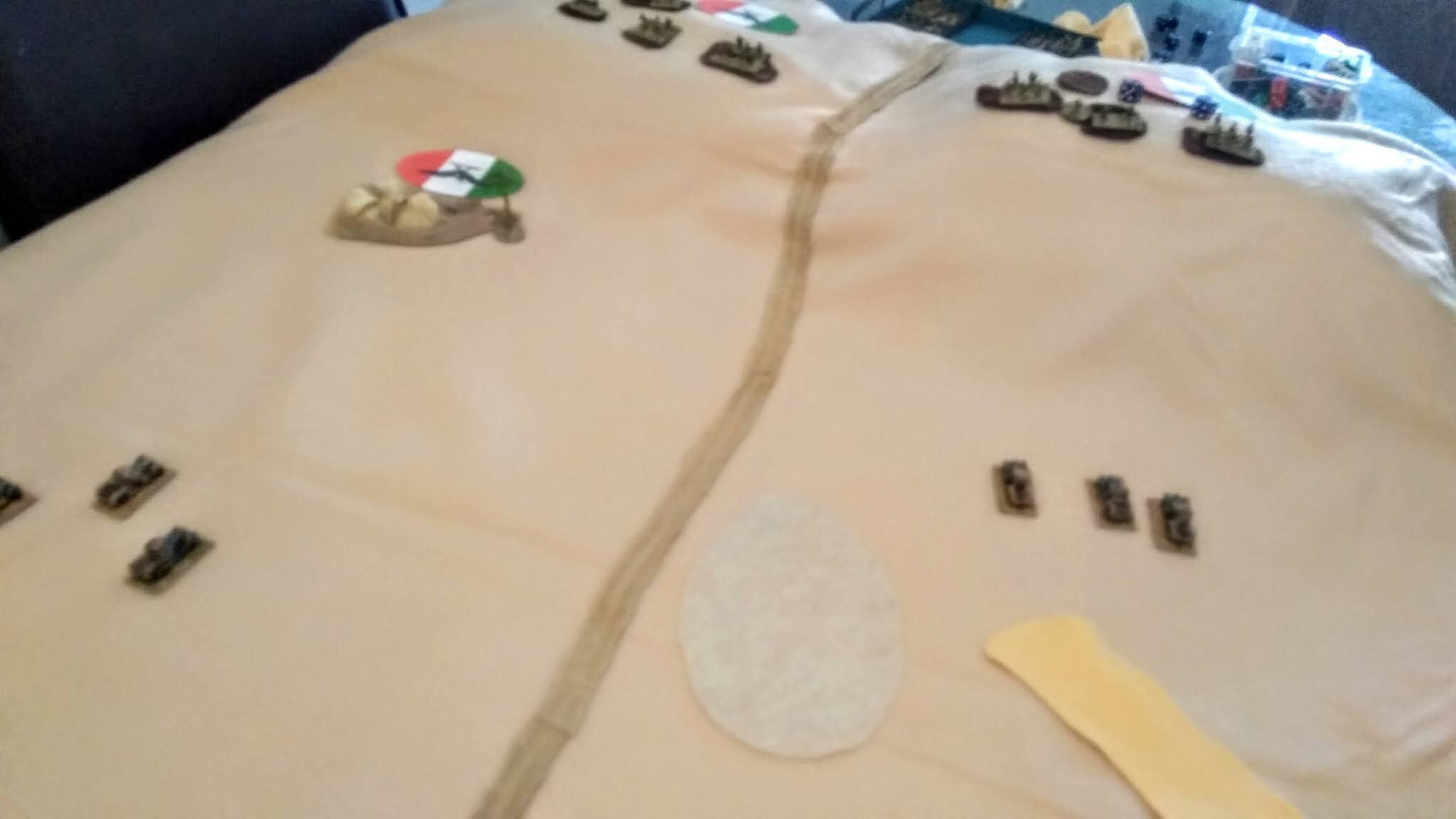Editor’s Note: I’m afraid the pictures that should accompany this AAR have been lost in the mists of time.
This AAR blog entry is different than my previous ones in that this was not a ‘proper’ game, but a play test of Too Fat Lardies’ new third edition of “I Ain’t Been Shot, Mum!” with Steve H. (Combat Colours) , Curtis T., and myself. Both Steve and I have played the previous editions of IABSM, but both of us have not played IABSM for a few years due to various reasons, mainly the lack of my free time and trying Blitzkrieg Commander/Cold War Commander and Force on Force systems instead. Needless to say, it was like coming back home to a long lost love by using these rules! I enjoy them greatly!
First, both Steve and I bought the IABSM3 bundle, a hard copy and a PDF version of the rules, a pack of cards for game sequence, a pack of tokens, and finally a limited edition 28mm figure of one of Too Fat Lardies’ Big Men characters, Hugh Jarce.
The Book / PDF
I really like the quality of the printed book and find it easy to read. Too Fat Lardies have come a long way since their first printed materials, and I know that they will only improve in the future. I have become a big fan of PDF’s for the last few of years. I really like the lack of physical space needed for storage of tomes of books or other printed material. With PDF’s , I am more willing to make impulse buys on different rules, books, etc. of systems I am not familiar with or periods that I would not be normally be interested in since they take up space on my bookshelves. The only problem that I have with PDF’s is not been able to use them at games, except if I printed them off before a game. (Note: Up to now I didn’t have an iPad or E-reader, but I got a Kindle Fire for Xmas so this issue is now moot.)
Cards / Tokens
The cards are huge! That is not a bad thing, but will take a bit of getting use to shuffling cards that are bigger than traditional playing card size. Quality is good with a heavy stock and simple, but easy to read writing on them. The tokens are the only thing that I am not super please with (Sorry, Richard!) I think that some of them are too small, thin, and fiddly for fat fingers, especially the “wrenches.” I have not measured them, but they seem smaller then the Litko tokens which I am use to using. It probably is just me. Of course, I am planning to use 7mm dice to keep track of shock and kills on my infantry squads…so just ignore my comments on the tokens being too small.
Hugh Jarce
I like the figure! Great sculpt and casting, but it is in 28mm. I don’t game WWII in 28mm. But that has not stopped me from buying 28mm before. I plan to paint it up and I might use it somehow with the game – maybe a counter to keep track of how many Tea Breaks have occurred.
The Game Mechanics
As the gaming system is a proprietary item, I will not go into detail of it, but I will explain the rudimentary system of it. First, this is a game built heavily on the idea of “Friction” in the battlefield as explained in Carl von Clausewitz’s book, On War. A great article on the theory of friction in war was done by Richard Clarke on his blog. Secondly, the system is also built around the idea of “Big Men” or leaders influencing their men to go beyond what would be expected of them in battle. Finally, the other core element is the cards which randomize the sequence of play. Just look up some of the other blog entries at “Lard Island News” to see them give AAR’s of their past games to get a better idea of the system as well. One final note about the system, it encourages gamers to know about the period, tactics, and to have an understanding how to properly Kriegsspiel certain events or conditions that might occur in a game.
Our Play Test
As this was our first IABSM game in a few years, it did move rather slow at spots as we double checked certain things in the book, but once we got a few rounds in, it was all clicking back. We stuck with the core rules and did not use artillery, engineering, or Aces.
The game was using Steve’s 10mm late war WWII Germans and Soviets from various manufacturers. He did not have any German infantry, so my 10mm WWII US infantry stands stood in for the Germans. This specific game was armor heavy, by pretty much all standards and especially IABSM standards. Steve was Game Mastering it, Curtis T. was running the Soviets, and I was running the Germans.
The Location / Store
We meet at the Wargamer’s Cave in Granite City, Illinois to do the play test. Great place to deal with.
The Forces
The overall objective of the game was to have the Soviets advance across the board and capture the supply dump on the opposite site of the board and the Germans trying to stop them
They Soviets had two JS-2 tanks, five T-35/76 tanks, six M4 (76) tanks; three platoons of infantry, three platoon ‘Big Men’, one company ‘Big Man’, and four blinds + two dummy blinds.
The Germans had three Tiger I tanks, three Pz IVH tanks, two Marder III SPAT’s, two platoons of infantry, two platoon ‘Big Men’, one company ‘Big Man’, and three blinds + two hidden groups on the board.
Instead of using the blinds as described in the rules, we used the unit’s cards to represent their blinds on the table until proper blinds are made.
The Action
Ok, I did not take notes as this was a play test or a lot of pictures as I did not have a camera and my cell phone does not do good quality pictures. Plus, I really did not get to debrief Curtis about his actions after the game as I had to leave pretty fast at the end of the play test. So this AAR is very German player (me) focus and just comments on the pictures instead of the game as a whole as I would normally do.
This is a picture of the part of the store, with Curtis and Steve in it as well. Most of the board can be seen in the picture. The Soviets were advancing from the table edge near the lime green tape measure. One hidden German infantry platoon is entrenched along the road in the wheat fields near the village. In the village is the second German infantry platoon on a blind. This picture was taken after some action already had happen. The two burning markers almost center of the picture at the bottom near the farm complex are my two Marders. I had them set up in a blind that was partly hidden by the forest. They both got a couple of shots on the lead JS-2 and did hit it for some minor damage, but they were quickly destroyed before they got another action. The JS-2s and some tank riders are in the wheat field near the burning Marders.
Curtis is pointing to the farm complex as his attempt to spot any hidden units. It was vacant. This also is a better picture of the burning Marders and JS-2’s. If you look at the JS-2 unit, you will see a red chit out in front of one of the JS-2’s. This is a marker to help keep track of what unit that is for players to remember that group is “Armour One” (A1 on the chit) for when cards are drawn. Behind the other JS-2 is a dark color token that is a “Loss of Action” token that comes with the IABSM3 bundle. That was being used to represent the one level of shock that I did to that tank from my Marders. The three “I Ain’t Been Shot, Mum” cards around the group are being used for three Soviet blinds.
This is a better view of the table as a whole. The German blind of the infantry in the village can be seen in the crossroads and on the far bottom left is the blind for the platoon of PZ IVH. On the only hill is my remaining German unit hidden, the Tiger I platoon. I was holding off on firing them until I had the JS-2’s within close range.
Curtis drove his Shermans down the road without any recon. Prior to that, the German Blind card came up, so I had all of my blinds / hidden units on over watch, so when Curtis’ tanks drove past me, I started letting loose with Panzerfausts and machine gun fire, from both the hidden infantry in the wheat fields, the infantry in the village that was set up to provide supporting fire with range for their Panzerfausts, and my Pz IVH that where set up on the other side of the board for side shots on armor. As you can see, it was pretty deadly with taking out three and crippling a fourth of the six tanks and almost eliminating one Soviet squad to the man, but it could have been worst for Curtis. I decided not to use my Tigers as I was still waiting for the JS-2’s to get closer.
I took these after the game was called, so some of the tokens were already picked up by then. In the last turn, Curtis could not sort my entrenched infantry out as I keep shooting and hunkering down. The T-34’s drove around and hit my Pz IVH’s in the flank and killed one and damaged a second. The JS-2’s never did move, so I elected to open up with my Tigers on the JS-2’s. I killed one outright with my first shot (hint, it is nice to be shooting down from hill!). The other JS-2 took the brunt of the remaining Tigers, but I was never able to really damage it. It had in returned destroyed one of the Tigers.
Overall
The Germans blocked the Soviet advance temporary, but the Soviet would have eventually put enough pressure on both of my flanks that I would have to pull out. The Soviets lost five tanks and two squads of infantry by the end of the game, which was about a third of his total force. I lost two tanks and two SPATs, which was half of my armor, but only about a third of my total force.
The game went really good and we all had fun with the system again. Even though this was a lot of tanks on the table for an IABSM game, it ran very smoothly and we can easily run this much again. It was really nice to be able to sit down again and to have good discussions on proper tactics, the period in general, and general comradeship as a whole.
I know Steve is going back to his roots of IABSM by painting up 15mm WWII figures again for the 1941 Russia. Hopefully he will get that running soon again. I am planning to redo my 10mm Vietnam figures and start running Too Fat Lardies’ “Charlie Don’t Surf” soon, as well as push for some 20mm Falklands games in 2011 using either IABSM3 for company actions or Too Fat Lardies’, “Troops, Weapons, & Tactics” for platoon actions.
Sapper Joe









